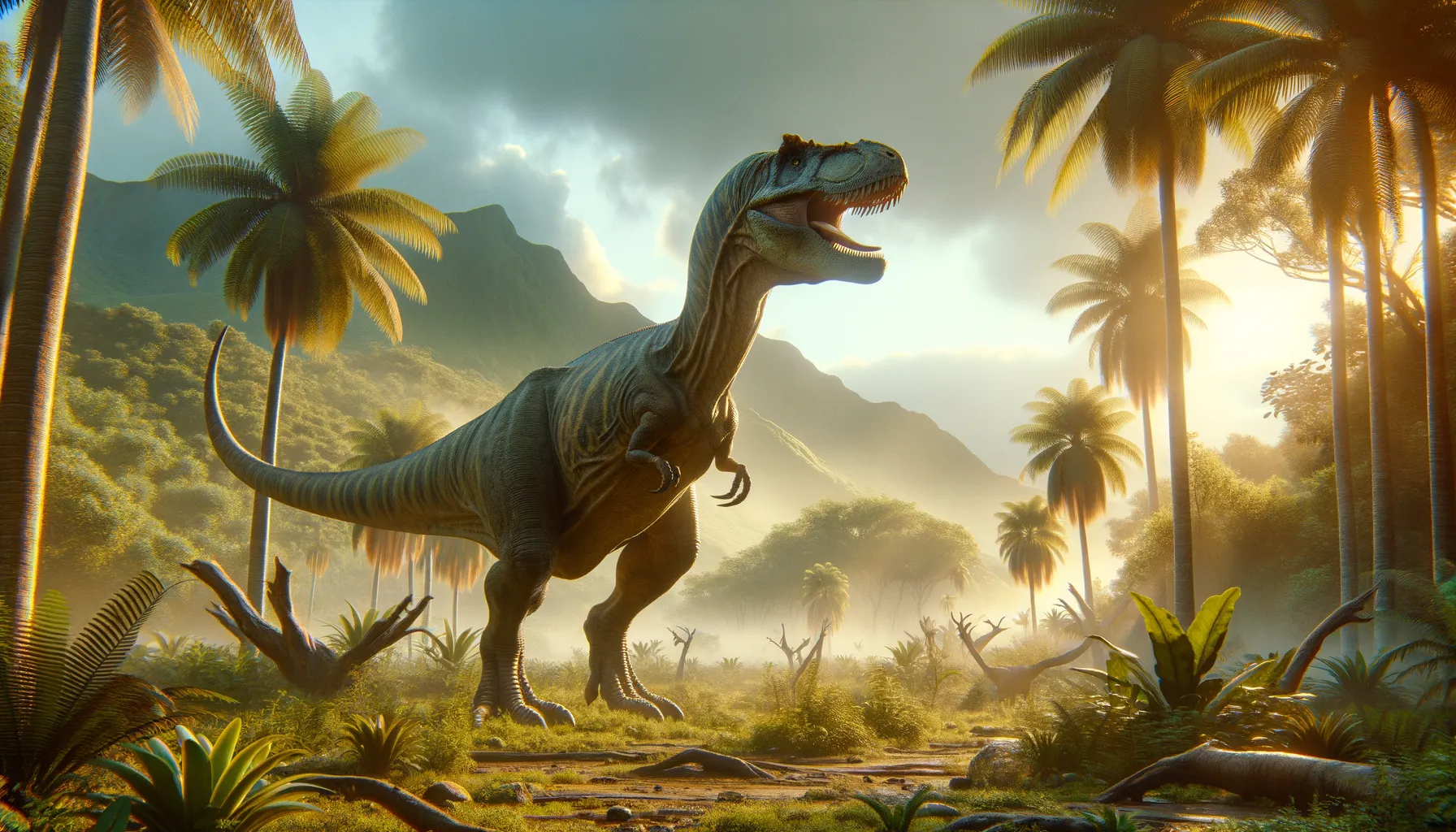
Sektensaurus
Explore the past with a gentle giant.
Period
Cretaceous
Length
Roughly 6 meters from head to tail.
Height
Around 2 meters tall at the hip.
Weight
Approximately 300 to 400 kilograms.
Sektensaurus was a herbivorous dinosaur known for its moderate size and bipedal stance. Living during the Late Cretaceous period, it roamed what is now South America. As an ornithopod, Sektensaurus was part of a diverse group of plant-eating dinosaurs that thrived before the mass extinction event. Its first fossils were unearthed in Patagonia, offering insights into the rich ecosystems of its time and the evolutionary paths of ornithopods.
Diet
Sektensaurus was a herbivore, feeding primarily on ferns, cycads, and other low-lying vegetation. Its teeth and jaw structure suggest it was adept at chewing tough plant materials, often found on the forest floor.
Hunting
As a herbivore, Sektensaurus did not hunt for prey. Instead, it focused on finding abundant plant life, which required sharp eyes and knowledge of the landscape to stay nourished and avoid predators.
Environmental challenges
During the Late Cretaceous, Sektensaurus faced environmental challenges such as fluctuating climates and competition for food resources with other herbivores. Periodic volcanic activities might have altered its habitat, forcing adaptation to new plant types. Predators in its ecosystem demanded constant vigilance and survival strategies to ensure its continuity.
Speed
Comparable to a fast human walk.
Lifespan
Average lifespan estimated at 20-30 years.
First discovery
Discovered in Argentina in 2017.
Fun Facts
- Sektensaurus is a type of dinosaur called a sauropod, known for their long necks and tails.
- It lived during the Late Cretaceous period, around 86 to 84 million years ago.
- The first fossils of Sektensaurus were discovered in Argentina, in a region called Patagonia.
- Unlike some of its gigantic sauropod relatives, Sektensaurus was a relatively small sauropod.
- Its name 'Sektensaurus' comes from the Sekten community of people who live in the area where it was discovered.
- Sektensaurus was a herbivore, meaning it ate plants.
- Sektensaurus's fossils help scientists understand more about the diversity of sauropods in South America during the Late Cretaceous.
Growth and Development
Sektensaurus grew rapidly in its early years, a necessity to escape predation. It reached near full size by its teenage years, enabling it to venture further from nesting areas. This rapid growth was fueled by its rich, plant-based diet. Over time, its bones would thicken, providing support for its larger body and aiding in movement.
Habitat
Sektensaurus thrived in lush, forested environments of what is now modern-day Patagonia. These forests were rich in ferns and cycads, providing ample resources for a growing population. Seasonal changes could have driven migrations within its range, seeking out optimal feeding grounds.
Interaction with other species
Sektensaurus coexisted with a variety of dinosaurs, including predators like theropods, requiring a keen awareness of its surroundings. It likely traveled in groups, utilizing safety in numbers to deter attacks. Interactions with other herbivores might have involved competition for resources, shaping its foraging behaviors.
Natural lifespan
Sektensaurus likely had a natural lifespan of up to 30 years.
Reproduction
Like many dinosaurs, Sektensaurus likely laid eggs in nests constructed on the ground. Parental care might have been minimal, relying on sheer numbers for juvenile survival. Hatchlings grew rapidly, reaching independence quickly to evade predators.
Social behaviour
Sektensaurus may have exhibited herding behavior, moving in groups to optimize foraging and improve defense against predators. Social hierarchies within these groups could have been present, facilitating coordinated movements and resource sharing. Vocalizations or displays might have played roles in communication.
Fossil locations
Fossil remains of Sektensaurus have been primarily located in Patagonian Argentina. These discoveries have expanded understanding of ornithopod diversity within South America. Ongoing excavations continue to reveal more about its life and environment.
